Last week’s delivery of the improved Kilo-class submarine Ha Noi to the government of Vietnam was just the latest undersea-vessel acquisition of Asian navies. Asia is in the midst of a submarine buying spree, with most of the major powers planning substantial fleet increases over the next two decades. Two countries, Malaysia and Vietnam, have recently acquired their first submarines while a third, Thailand, is pushing to purchase its first submarines in the near future.
The trend to submarines reflects the desire of Asian countries to protect their recently acquired wealth and enduring economic interests. Much of Asia is dependent on open sea lanes to keep export-driven economies humming, and a recognition of the importance of sea power is driving a general naval expansion throughout the region.
Another, more ominous driver is the recent uptick in territorial disputes in Asian littorals, particularly those driven by China. China’s claim of the so-called “Cow’s Tongue” in the South China Sea brings it into conflict with the territorial claims of Taiwan, the Philippines, Vietnam, Malaysia, and Brunei. Meanwhile the Senkaku/Diaoyu islands in the East China Sea are claimed by China, Japan and Taiwan.
China
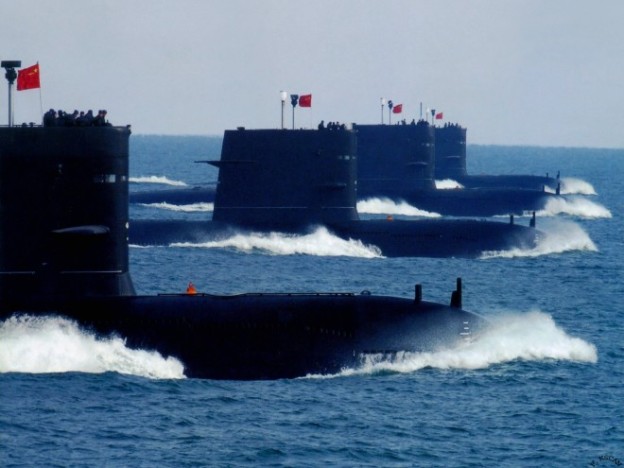
Fueled by a strong economy, the Chinese navy is making strides in development of a multifaceted submarine force. One goal of Chinese submarines is to create an anti-access/area denial zone up to what it refers to as the First Island Chain, consisting of the Kuril Islands, Japan, Taiwan, and the South China Sea. The chain represents the absolute minimum to defend the Chinese mainland.
The second goal would be to enforce China’s claims on the East and South China Seas. Patrols and presence missions in the waters surrounding those areas would help press these claims.
The Chinese navy is replacing the single Xia-class (092) ballistic missile submarine with up to six modern Jin-class (094) ballistic missile submarines. Each Jin-class displaces 9,000 tons submerged and is equipped with a dozen JL-2 submarine-launched ballistic missiles. The JL-2 is estimated to have a range of 7,200 kilometers (4,475 miles) and capable of carrying up to eight nuclear warheads.
The three submarines of the Shang class (093) represent the second generation of Chinese nuclear attack submarines, the previous Han class having been a technical disappointment. Displacing 6,000 tons submerged, the Shang class features six bow-mounted 533mm torpedo tubes. Built with Russian assistance, only three ships were produced, suggesting the class was less than successful. Yet another class (095) is believed to be under development.
China also operates a range of diesel electric submarines. Nine submarines of the Yuan class (041) and the 14 of the smaller Song class (039) represent the indigenously produced fleet. Yuan-class ships displace up to 2,400 tons submerged, while the slightly smaller Song boats rate 2,200 tons submerged. Both are equipped with six bow-mounted 533mm torpedo tubes.
China also operates ten improved Kilo submarines purchased from Russia, and earlier this year placed an order for another four Lada-class subs. That latest order, despite production of the Yuan class, suggests dissatisfaction with the performance of the latter.
Russia

The Russian Pacific Fleet reflects the decline of the former Soviet navy’s submarine forces, even more so than the rest of the Russian navy. All of the submarines of the Pacific Fleet were built in the 20th century, with a good number constructed in the 1980s.
Four Borey-class ballistic missile submarines will be assigned to the Pacific Fleet in the future, replacing the fleet’s single Delta III submarine. Submarines of the Borey class displace 19,400 tons submerged and are equipped with six 533mm bow-mounted torpedo tubes and 16 SS-N-32 Bulava submarine-launched ballistic missiles. Development of the Bulava has been problematic, with nearly half of test launches ending in failure.
Four Oscar-class guided-missile submarines serve with the Pacific Fleet. Each displaces 14,500 tons submerged and carries 24 SS-N-19 anti-ship missiles. Torpedo armament is in the form of four 533mm and four 650mm bow-mounted torpedo tubes capable of firing SS-N-16 Stallion and SS-N-15 Starfish anti-submarine missiles, guided torpedoes, and Shkval supercavitating torpedoes.
The bulk of the Pacific Fleet’s submarine force lies in its attack submarines—four nuclear powered Akula-I, each displacing more than 8,000 tons submerged. Armament consists of four 533mm and four 650mm bow-mounted torpedo tubes, capable of launching SS-N-21 Sampson land-attack missiles, SS-N-15 anti-submarine missiles, torpedoes, and mines.
Finally, there are seven Kilo-class diesel-electric submarines, including three improved Kilo submarines. The Kilo-class displaces 3,100 tons submerged, and features six 533mm torpedo tubes capable of launching either SS-N-15s or torpedoes. The ship can alternately carry up to 24 mines, or a mixture thereof.
India
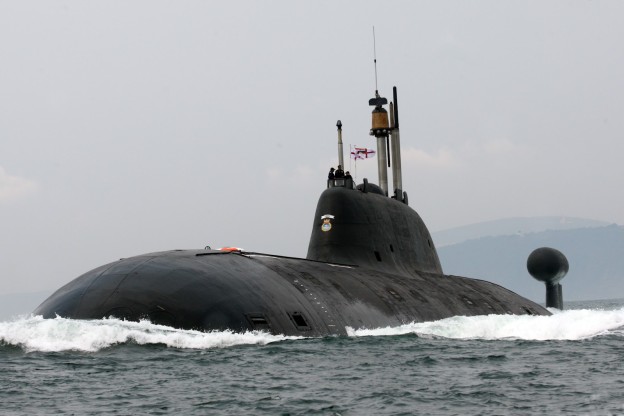
India’s submarine fleet, which faces both Pakistan and China, is in an increasingly precarious position. Indian submarines are growing older as plans to replace them become tangled in bureaucratic red tape, and both of India’s potential enemies’ submarine fleets grow larger and increasingly sophisticated.
India has launched its first ballistic missile submarines, the Arihant. Based on the Russian Akula nuclear attack submarine design, the Arihant-class features a 10-meter plug to accommodate four vertical launch silos equipped with K-15 Sagarika ballistic missiles. The 6,500-ton submerged submarine also features six 533mm torpedo tubes capable of launching torpedoes or Klub anti-ship missiles. At least three Arihant-class submarines are projected.
India also retains one Akula-1 submarine, Charkra, in conventional attack submarine configuration. Displacing 9,100 tons submerged, torpedo armament is identical to the Arihant class. Originally built for the Russian navy as the Nerpa, it suffered from quality control problems and a 15-year construction period. The ship is currently on a ten-year lease to India.
In addition to nuclear submarines, India operates a fleet of ten Kilo-class Russian submarines, the oldest of which is 30 years old. One submarine, Sindhurakshak, exploded in port earlier this year and was a total loss. A plan to build six submarines of the Scorpene class—1,700 ton ships equipped with torpedoes and Exocet missiles—has been repeatedly delayed because of bureaucratic and technical problems.
Pakistan
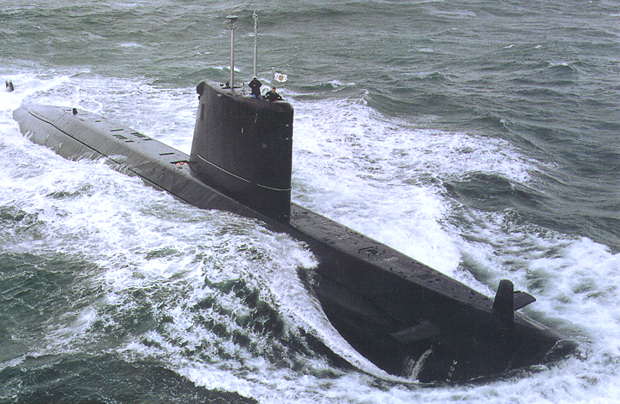
Pakistan’s sole adversary at sea is India. Pakistan maintains five submarines of the French Agosta class: two are of the original Agosta class built in the 1970s, while the other three are of the modernized Agosta 90B class. The three Agosta 90B submarines displace between 1,760 and 2,010 tons submerged, are equipped with four 533mm bow-mounted torpedo tubes capable of firing torpedoes and Exocet missiles. By 2014 all three will feature an air-independent propulsion system, making them among the most sophisticated submarines in Asia.
Japan
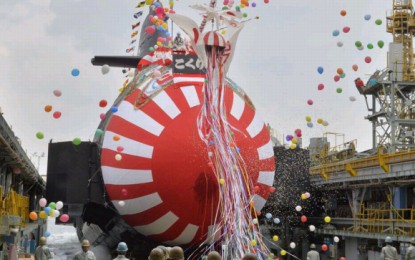
Japan recently declared an intent to boost its submarine fleet from 16 to 22 ships. Production of the Soryu-class diesel electric submarines continues with last week’s launch of Kokuryu (“Black Dragon”). Eight Soryu-class submarines will be built, the last of which was laid down this year. At 4,200 tons submerged, the Soryu class is one of the few regional submarines to feature air independent propulsion, technology acquired from Sweden. Armament is in the form of six 533mm torpedo tubes capable of launching Type 89 homing torpedoes and Sub Harpoon missiles.
Rounding out Japan’s submarine fleet are the 11 submarines of the Oyashioclass. At 3,600 tons submerged, armament is identical to that of the Soryuclass. It is not clear how Japan intends to grow its submarine fleet, but for the near future that fleet will likely include the Soryu class, the Oyashio class, and the three remaining ships of the Harushio class, 2,750 ton ships with armament identical to the other classes. The oldest Harushio submarine is only 19 years old, the average age at which Japanese subs are retired, but a time when diesel electric submarines in other navies are usually still in service.
Japan’s submarine fleet will increase its ability to create an anti-access / area denial force of its own. The Chinese Navy has regularly sortied through the Miyako Strait, the shortest route between the Eastern Fleet’s headquarters and the Western Pacific. Japanese submarines, backed up by surface and air assets, would make Chinese transit of the straits a difficult proposition
Australia
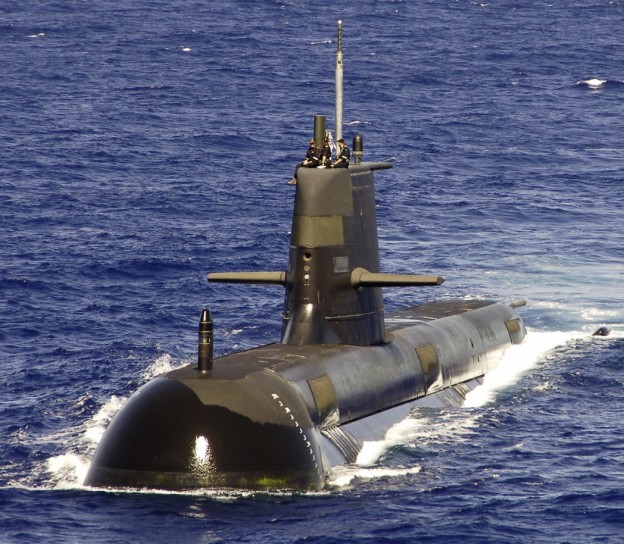
Australia’s submarine force lies in the six ships of the Collins class. At 3,300 tons submerged, the ships are theoretically some of the most advanced diesel-electric submarines in existence, with advanced sensors and excellent performance submerged. Six bow-mounted torpedo tubes are capable of firing U.S. Mk-48 ADCAP torpedoes and Sub Harpoon anti-ship missiles.
The Collins class has been beset with problems since the lead ship entered service. Software problems, hydrodynamic flow problems, cracked propellers, engine and gearbox seal problems, and periscope vibration have all contributed to a low operational readiness rate for the submarines. At one point in 2009 only one submarine, HMAS Farncomb, was rated capable of sea duty. That is expected to improve to four submarines capable of sea duty by early 2014.
In 2009 the Australian government called for replacing the six ships of the Collins class with a dozen submarines of an advanced design. The new design likely will be either an evolution of the Collins design or something new, and will be built in Australian shipyards. In the meantime the Collins class will continue to serve, with upgrades, until at least 2030.
Singapore
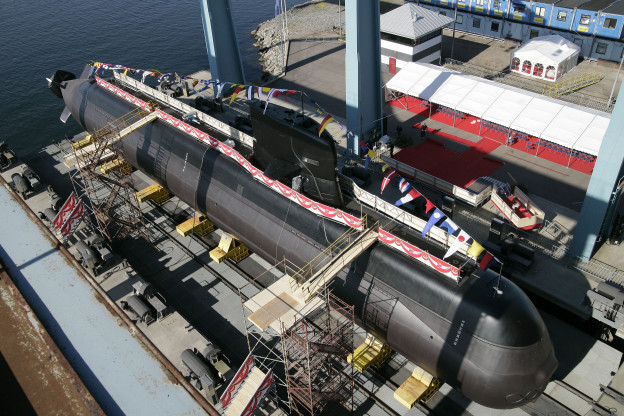
Sitting astride the southern approach to the Strait of Malacca, Singapore is in close proximity to one of the most important shipping lanes in the world. Singapore has two submarines of the Archer class, submarines originally built for the Swedish navy. Although up to 25 years old, the Archer class was extensively refitted, including the addition of air-independent auxiliary engines. Each Archer class submarine displaces 1,600 tons submerged and has six bow-mounted 533mm torpedo tubes and three bow-mounted 400mm torpedo tubes. The ships also are capable of carrying up to 22 mines in external portable containers.
Singapore additionally has four submarines of the Centurion class. Also Swedish in origin, the Centurion boats were built in the late 1960s but remain in excellent condition when retired. At 1,400 tons submerged, each packs four 533mm and two 400mm bow-mounted torpedo tubes.
North Korea
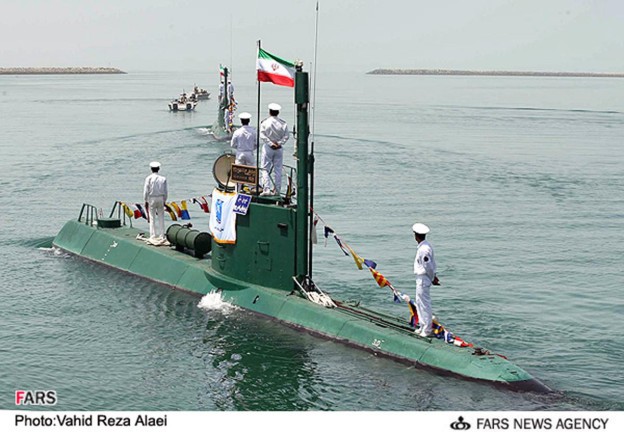
The North Korean economy did not adjust well to the fall of the Soviet Union, and its navy, the service with the lowest priority in terms of resources, has particularly undergone hard times. Since then North Korea has begun constructing submarines of less than 500 tons, one of which sank the Republic of Korea Navy corvette Cheonan in 2010.
Originally the mainstay of the North Korean submarine force, the 20 Soviet-designed, Chinese-built Romeo-class diesel electric submarines are slowly being phased out in favor of the Sang-O class of coastal submarines. Up to 40 Sang-O-class ships have been produced. The Sang-O class displaces 325 tons submerged, is equipped with four 533mm torpedo tubes, and can carry up to 16 mines. At least some ships of the class are unarmed infiltration submarines designed to ferry North Korean special forces. A lengthened version, the K-300, was identified in 2011.
North Korea also operates up to 10 midget submarines of the Yono class. At 130 tons submerged, featuring two 533mm torpedo tubes, it is believed to be the type of submarine responsible for the sinking of South Korean Cheonan.
South Korea
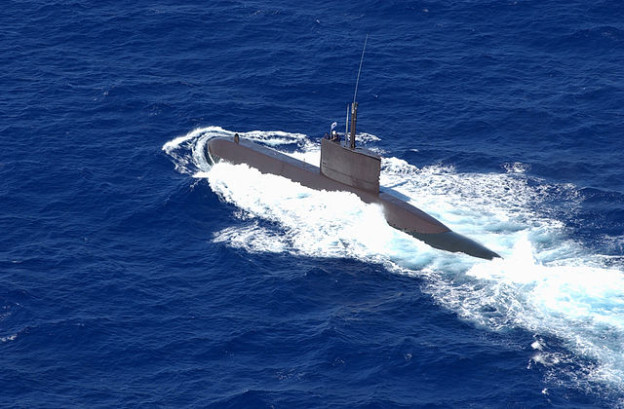
Like the rest of the Republic of Korea Navy, the submarine force is in a period of expansion and is expected to double over the next 20 years. The current force consists of nine Type 209 submarines, built in both Germany and South Korea. The Type 209s displace 1,300 tons submerged and are equipped with four bow-mounted 533mm torpedo tubes capable of firing torpedoes and laying mines. Some ships in the class are capable of firing Sub Harpoon.
In addition to the Type 209s, a force of nine Type 214 submarines is also under construction, with three completed. At 1,800 tons submerged the 214s are heavier than their predecessors and carry twice as many torpedo tubes, all of which will be capable of firing Sub Harpoon.
A future submarine program, KSX-III, envisions nine submarines of 3,000 tons entering service around 2020.
Taiwan
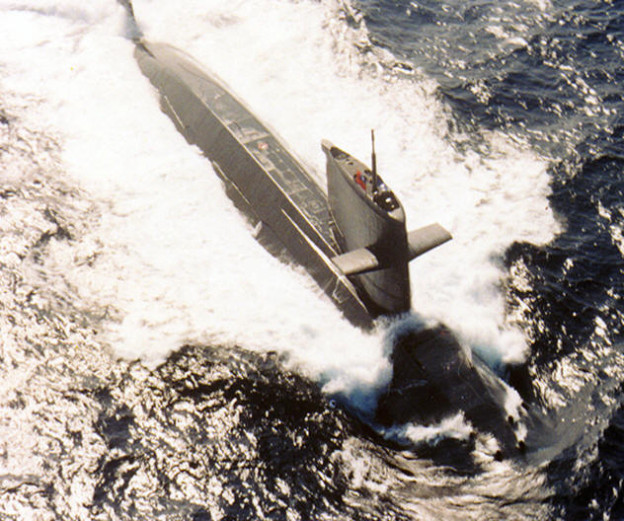
Taiwan has four aging diesel-electric submarines — the oldest of which are of World War II vintage. Taiwan for some time has expressed a desire to find a replacement, but has been unable to find submarine producing countries that are willing to defy Chinese political pressure. The only potential provider of submarines, the United States, does not build diesel-electric submarines.
Vietnam
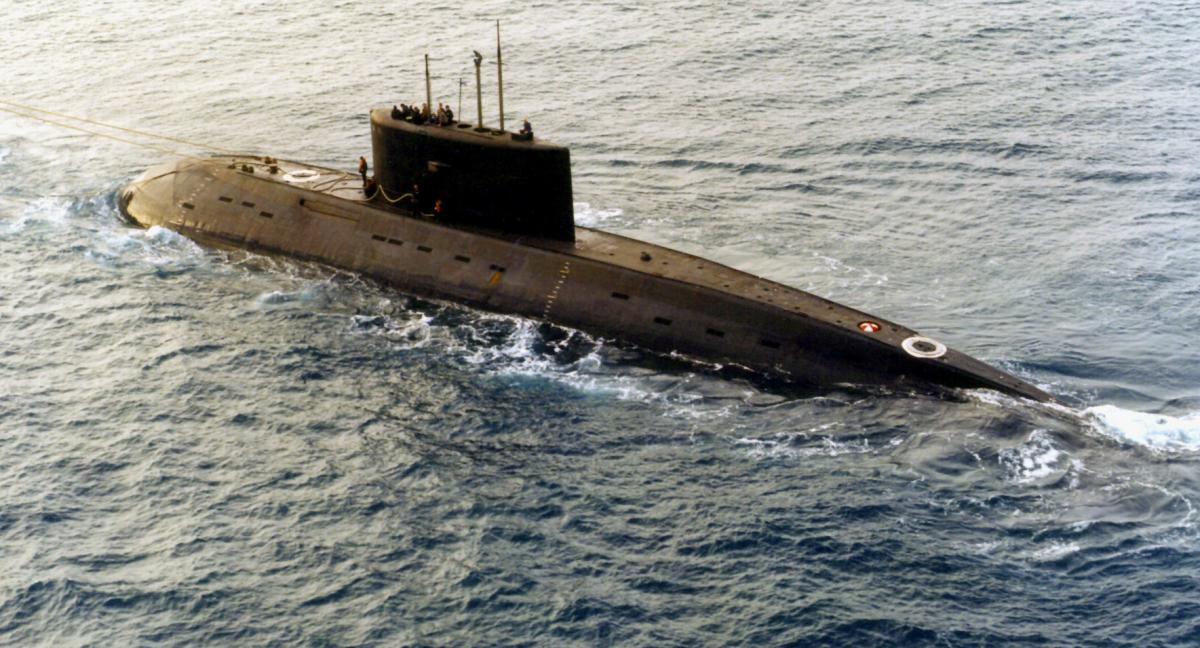
In April 2009 Vietnam signed a deal with Russia for six new so-called “Improved Kilo” (Project 636) submarines for $1.8 billion. The six diesel electric submarines will be the first Vietnamese submarines in service. Displacing 4,000 tons submerged, the Ha Noi class mounts six 533mm torpedo tubes capable of launching torpedoes or SS-N-27 (“Klub”) anti-ship missiles.
The first of the six submarines, Ha Noi, was delivered to Vietnam on 7 November. The last of the boats is scheduled for delivery by 2016. Up to 50 mines may be carried as an alternative to torpedoes and missiles, an important area-denial capability.
Indonesia
The Indonesian navy’s submarine inventory currently consists of two aging submarines of the German Type 209 class, Cakra and Naggala. The submarines displace 1,400 tons submerged, have eight bow mounted torpedo tubes, and the option to lay mines. Both are over 30 years old and despite repeated refits are currently out of service awaiting upgrades. Daewoo of South Korea was contracted to modernize Cakra, which was supposed to be completed by 2013.
Indonesia’s Defense Strategic Plan 2024 calls for a fivefold increase in the number of submarines over the next 11 years. Toward that end Indonesia has ordered three modified Type 209 submarines, to be built in both South Korea and Indonesia. The 1,600 ton vessels will feature eight 533mm torpedo tubes, capable of launching a mixture of torpedoes and mines. The submarines will begin entering service in 2015, with all three completed by 2018.
Malaysia
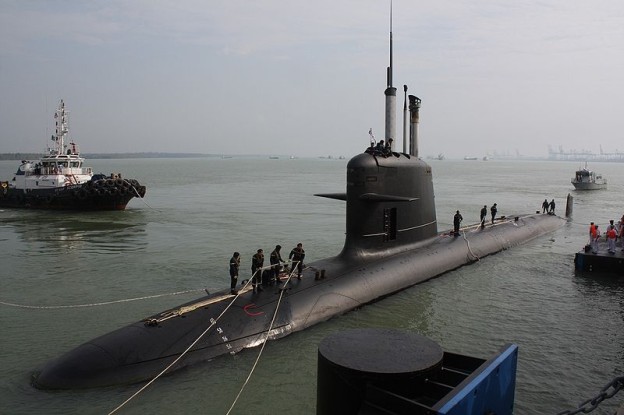
Malaysia recently completed purchase of its first two submarines, the Scorpene-class vessels Tunku Abdul Rahman, and Tun Razak. At 1,740 tons submerged, the submarines have six 533mm torpedo tubes, capable of firing Black Shark homing torpedoes and Exocet anti-ship missiles. The submarines are not fitted with an air-independent propulsion system, but the boat’s design makes an option for future installation.
The submarines were built by the French defense contractor DCNS and Spain’s Navantia. Tunku Abdul Rahman had problems early on with her cooling system and was unable to dive, but those issues are thought to have been solved.
The two submarines were purchased, along with training, for $1.1 billion. Crews for the submarines were trained locally, on board the retired French navy submarine Quessant.
Thailand
Thailand does not own any submarines, but it is laying the groundwork for a future fleet. A submarine fleet headquarters at Sattahip Naval Base will be completed in 2014. Thailand has sent officers to attend submarine training in Germany and South Korea, and will also soon complete construction of a Submarine Command Team Trainer.
The Thai Ministry of Defense proposed purchasing six used Type 209 submarines from Germany in 2011, but the sale was canceled.





